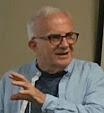December 8, 2024: Let’s talk about yesterday. It seemed like the whole world gathered to reopen La Cathédrale Notre-Dame de Paris after five years of unimaginable restoration and repair. People around the world were horrified by the fire and the possible loss of this exquisite architectural and historical masterpiece. The wealthiest among us, and the poorest, shared of their means to provide for its repair.
Yesterday’s ceremony was beautiful and exhilarating in so many ways. While the Church made every effort to include women in the processions and readings, they were painfully absent from the rows of white-robed clergy seen everywhere. This seemed odd to me, given that this very structure, medieval and magnificent as it is, was dedicated not to any man, not even to Jesus, but to the woman who birthed him. Even in Christian scriptures, Mary is identified as a prophet calling forth a new and just social order.
Before Notre Dame’s first stone mason began to work more than 900 years ago, people made pilgrimages to this site. A massive Merovingian church, La Cathédrale Saint-Étienne, preceded it by 600 years. In Western classical times, an ancient Greco-Roman temple rose on this site. Napoleon Bonaparte was crowned emperor in this church; Joan of Arc’s rehabilitation trial began here. Many French and European royals were baptized, wed, and buried from this sacred space. During the French Revolution, it became the “Temple of Reason.”
I am pleased that so many children were present, almost all of them in the choir. Their singing was celestial, and they rightfully shared the sacred space behind the altar and between the rows of esteemed clergy. I am pleased that someday they will be able to tell their grandchildren about this high moment in their lives.
There were many girls in the choir. I am delighted to
imagine that someday some of them also will stand behind this very altar and
perform all the priestly functions that are denied to them at present.
Finally, I wonder about the choice of December 7 for this reopening. Why not today? (Of course, significant ceremonies will continue today and the rest of this week.) But today, the very next day, is celebrated in Catholic tradition as the Feast Day of the Immaculate Conception. Traditionally, Mary is the new Eve, untouched by evil - however we define it - which seems to infect the rest of creation. But unlike Eve, Mary does not turn away from her calling. She represents a new beginning, a new start, a new creation. She is God’s ambassador of hope for a troubled world. She represents the awesome possibility for positive change when we allow our human agency to be shaped by our spiritual calling. With many of the world’s leaders attending and the eyes of the world watching the reopening, is this not the message we so desperately need to hear?
Paul McCartney once said it this way:
"When I find
myself in times of trouble
Mother Mary comes to me
Speaking words of wisdom
Let it be
And in my
hour of darkness
She is standing right in front of me
Speaking words of wisdom
Let it be.."
December 8, 2024





























